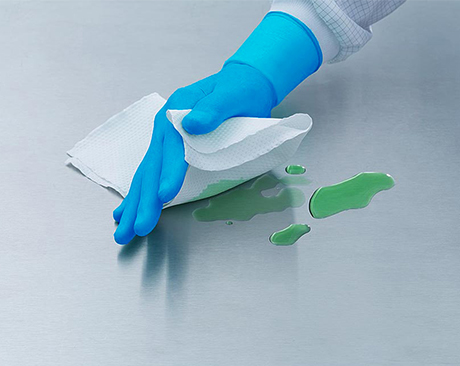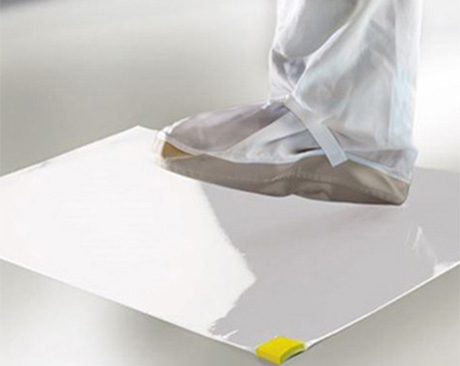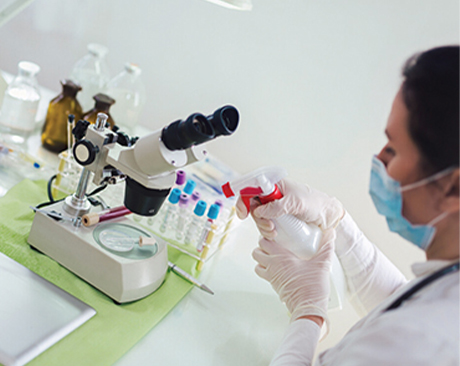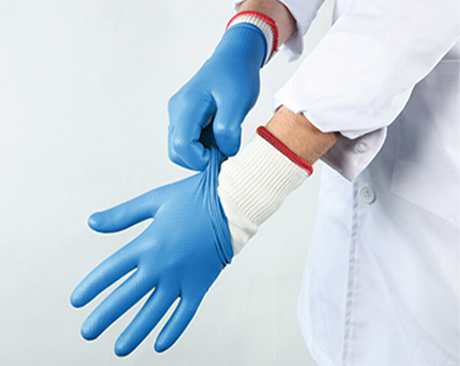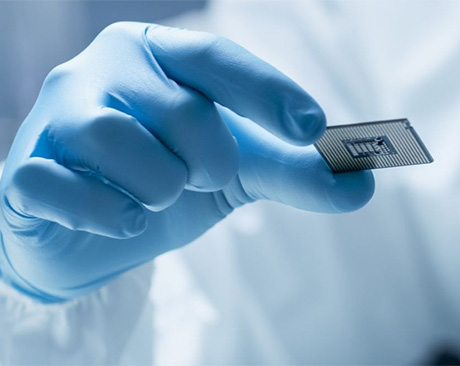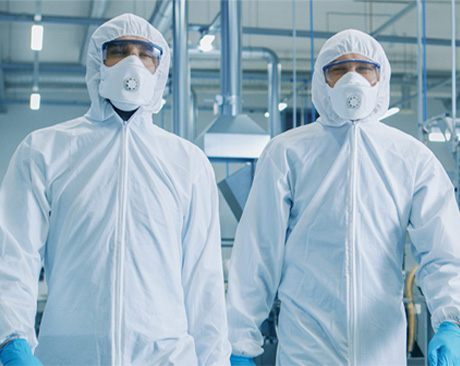Important Cleanroom Behaviours and Protocols
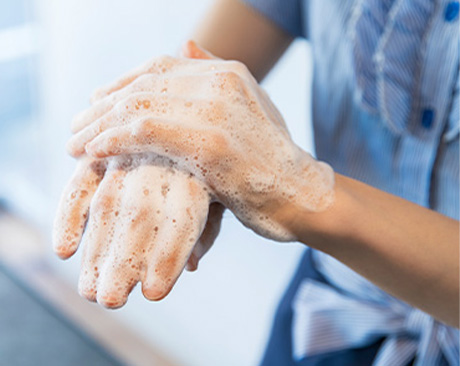
The implementation of proper cleanroom and maintenance procedures is imperative to the continued safety of all people in a cleanroom, as well as ensuring that products and test results leaving the cleanroom can be trusted to be safe, reliable and of high quality. Cleanrooms are classified using ISO Classes with ISO 9 as the lowest and ISO 1 as the highest.
Gowning Protocol
It is of vital importance that the appropriate PPE is worn in cleanrooms, FDA studies have shown that workers are the main source of contamination in pharmacy cleanrooms. Cleanrooms classified as ISO Class 5 and higher are required to use cleanroom coveralls, gloves, hoods and shoe covers - the process and order of donning the correct PPE to wear in a given cleanroom is referred to as Gowning Protocol. Gowning Protocol varies from cleanroom to cleanroom depending on the ISO class and type of anticipated exposure that could occur. It is commonly practiced that gowning takes place in a top-bottom sequence, starting with PPE for the head and working down to the feet to minimise the cross contamination that could take place. It is however, good practice for cleanrooms to conduct safety assessments to determine what order of gowning is most beneficial to that particular cleanroom. Factors such as field of work or study, layout and surrounding environments have a major impact on determining the optimal order of gowning.
Hygiene
Prior to donning gloves, it is imperative that those entering a cleanroom thoroughly wash their hands - there can be a tendency for people to skip this step, wrongly assuming that the barrier the sterile gloves provide will keep contaminants at bay. Bypassing handwashing leaves cleanrooms, their products and the people in them vulnerable to viral and fungal threats as well as the introduction of microbes into the previously sterile environment. When washing one's hands before entering the cleanroom one must take care to clean from the tips of the fingers up to the elbows, making sure not to miss underneath the fingernails where grime can become entrenched. It is important to immediately and thoroughly dry the cleaned skin with cleanroom approved paper towels, as studies have shown that while hand dryers have high efficiency in hand drying, they increase the amount of bacteria on the hands; single use paper towels have been proven to reduce the amount of bacteria on the hands. It is good practice to forego nail polish, scented hand lotion and other skin and cosmetic products to cut down on the possibility of contamination - ESD safe lotions can be procured from chemists and pharmacies. Similarly, jewellery on publicly visible parts of the body is to be avoided as particles and microorganisms cling to these, increasing the likelihood of contamination within one's cleanroom. Jewellery should not be worn underneath the gloves as it can cause sterile gloves to tear and cease functioning as a barrier to contamination.
Airflow
Commonly in cleanrooms, clean air comes straight down from the ceiling and leaves close to the floor. This means that it is very important that one moves in slow controlled movements within the cleanroom, to avoid stirring up the air as it leaves the room, as contaminants end up settling low as the day progresses. Quick erratic movements send plumes of air from low-down, back up into the room resulting in the distribution of contaminants. Due to the same reasoning, one should never lean over the product or test that it being worked on as the motion can disrupt the airflow, causing the displaced air to push down on onto the product leading to potential contamination. Vents and exhausts should never be obstructed as this hampers the proper circulation of airflow. Areas surrounding vents should be completely clear to allow for the removal of all contaminants during cleaning. Regulations surrounding coughing and sneezing vary from cleanroom to cleanroom, but a recommended option is to cough or sneeze into a cleanroom wipe held as close to the face as possible. Immediately afterwards one should leave the cleanroom, wash hands, and gown up in new PPE.
To learn more about ISO Standards read: ISO vs FED Standards in Cleanroom Control







